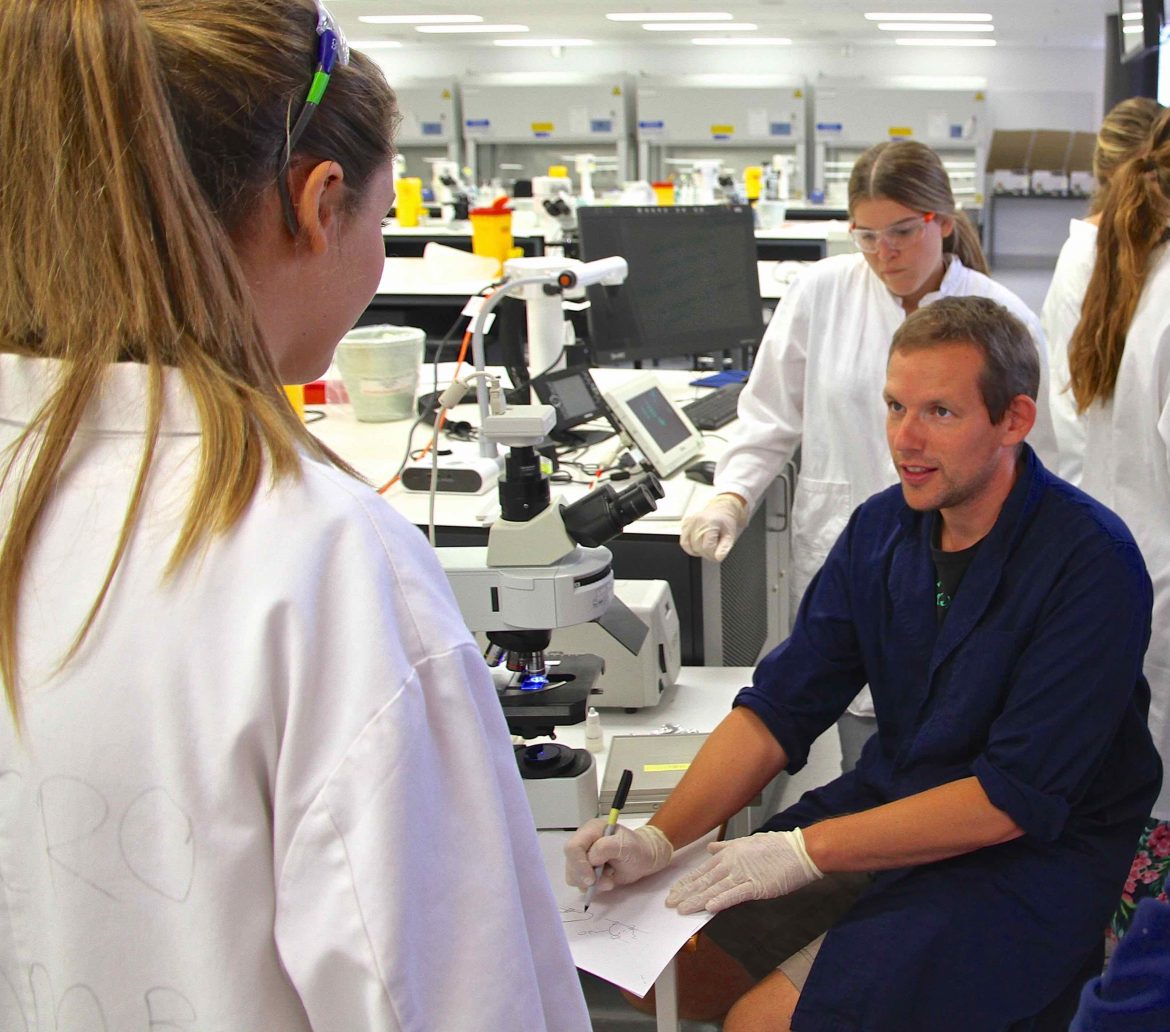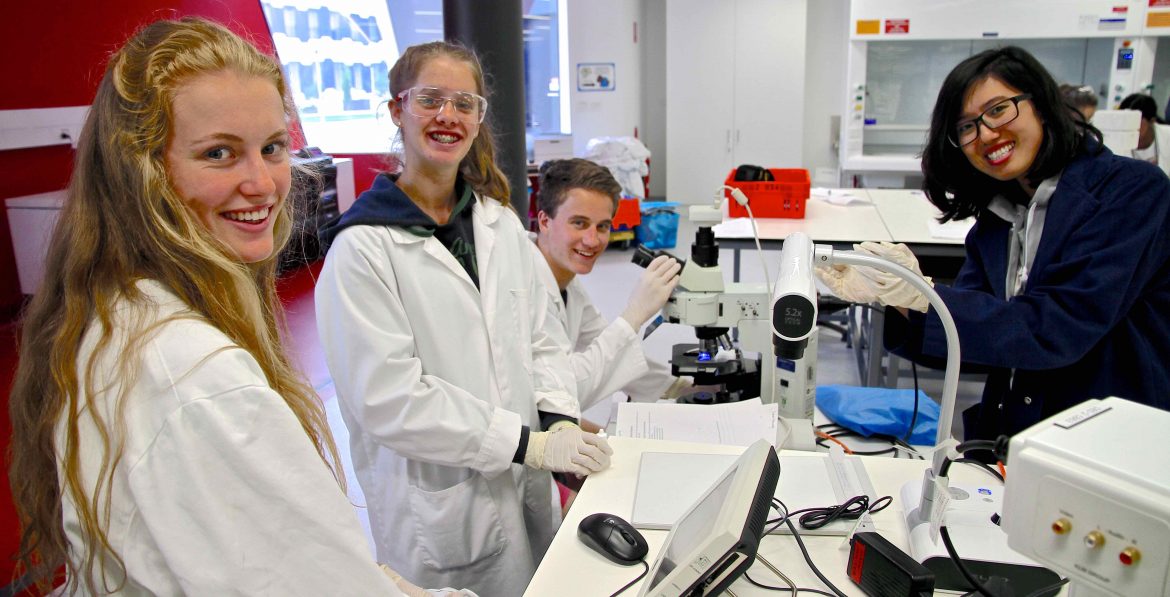In January 2015, NYSF students donned their lab coats, focused their microscopes, and honed their pipetting skills in an attempt to diagnose what ailed recently returned tourist, Meng ...
Meng is an intrepid traveller with a love of languages who has recently returned from backpacking through South East Asia. She spent much of her time in a local village near the Thai-Cambodian border, honing her mastery of the Northern Khmer dialect. Since her return to Australia, Meng has experienced increasingly severe cycles of headaches, fevers and chills.
The NYSF students’ brief was to use modern approaches to diagnose their patients, and, through consultation of the medical literature, suggest an appropriate treatment.

NYSF 2015 students with Dr Giel van Dooren, ANU's Research School of Biology
(images NYSF/Geoff Burchfield)

Using DNA samples from their patients, students performed diagnostic polymerase chain reactions to determine the identity of the parasite. They also examined microscope slides with blood smears and tissue samples to look for the presence of parasites in their patients. When they had established the likely cause of their patient’s illness, the students examined the medical literature to determine an appropriate course of treatment.
In addition to their crucial role in diagnosing their patients/demonstrators, the NYSF students got to chat with research scientists at various stages of their career, learning what it’s like to investigate the fascinating world of parasite biology. They also toured a modern research lab to learn about the sort of equipment that scientists use to investigate parasites.
So how did the students go in diagnosing Meng? They soon learned that she was infected with Plasmodium falciparum, the most devastating species of malaria-causing parasites. Without rapid treatment, Meng’s future looked grim. After consulting the medical literature, students realised that the region of Cambodia where Meng acquired her infection is rife with parasites that are resistant to many of the common medications used to treat malaria. Meng was prescribed with a course of artemisinin combination therapy, one of the very few antimalarial treatments still effective. Of course, prevention is better than cure. Upon examining Meng’s case history, students realised that she had not been sleeping in bed nets, nor had she take prophylactic anti-malarial medication, both of which would likely have avoided the predicament she found herself in. After a stern talking to, the NYSF students left Meng to her recovery and continued on their paths of scientific discovery in the nation’s capital.
The ‘Parasite Detectives’ pracs were conducted by Meng Zhang, Edwin Tjhin, Esther Rajendran and Giel van Dooren (Research School of Biology, ANU), with wonderful assistance from Peta Moisis and her team at the ANU Biology Teaching and Learning Centre. Melanie Rug and Kathryn Parker also contributed to the design of the prac.